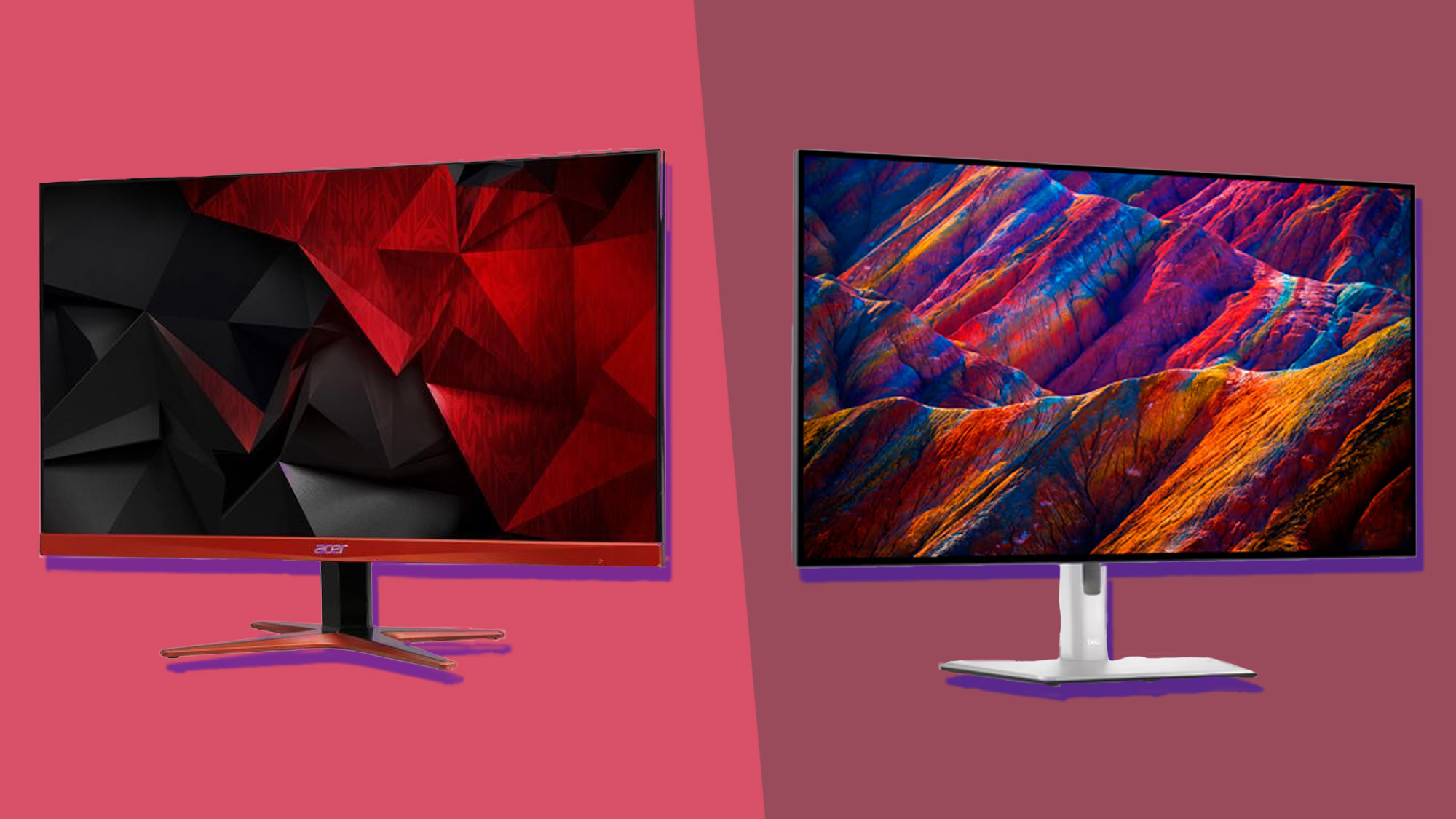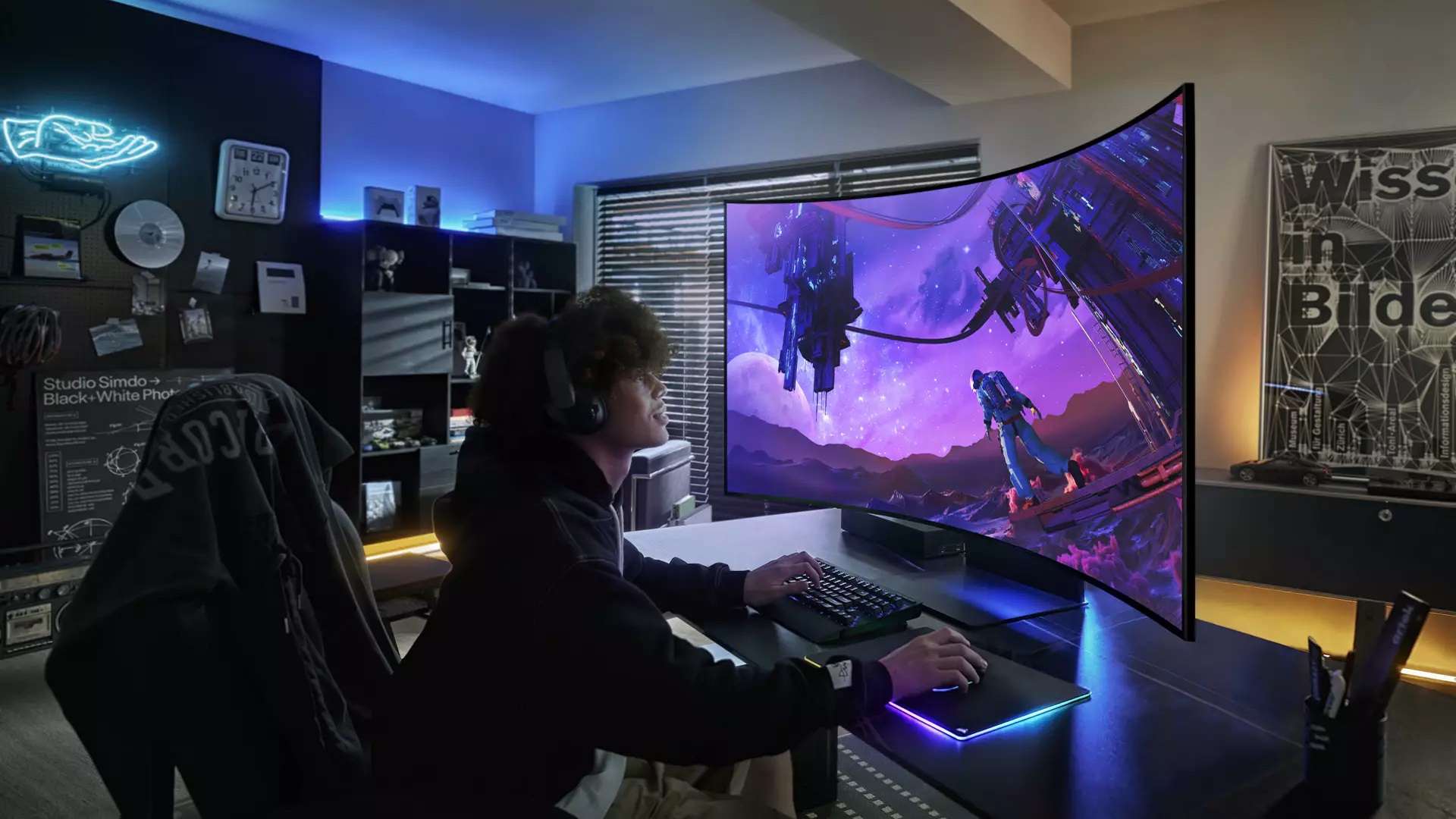4K vs 2K monitor: which monitor is right for your needs
The 4K vs 2K monitor debate isn't just for gamers anymore

As a rule of thumb, everyone needs a monitor. It’s the thing that you look at when you use your computer and choosing the right one is important — especially if you spend eight (or more) hours a day staring at it. But which one is best for you?
You’ve probably seen a few words and phrases bounced around when looking at different monitors and two that often crop up fall under the banner of resolution; 1440p and 2160p, also known as 2K and 4K, respectively. The resolution is essentially how many pixels there are on your display. The more pixels, the sharper things generally look. But it isn’t always that simple and there are other variables to take into account.
The short version that you really need to know is that 2K monitors have a vertical resolution of 1440 pixels and are also known as 1440p, QHD, or Quad HD. That’s double the resolution of 720P HD and a third more than 1080p. Then we have 4K, which has even bigger numbers. Here, we’re looking at the horizontal resolution and the name comes from there being around 4,000 pixels. In the case of most monitors, you’re going to get a resolution of 3840 x 2160 pixels — so more vertical space than a 1440p monitor, as you’ve probably figured out by now.
With that in mind, the bigger numbers are better, right? Not necessarily, and we’ll get into why.
4K vs 2K monitor: Price and Availability

You’re unlikely to struggle to find a monitor with either a 4K or 2K resolution, and you’ll probably be able to find one at most price points as well. 4K monitors tend to be on the larger side and can be more expensive as a result but there is no hard and fast rule here – monitor prices are about more than raw pixels, with so many other features and screen size differences to consider.
If you could buy the same monitor with the same features but with two different resolutions, 4K is very likely to cost more than 2K because of the smaller pixels, though. It’s just the way these things work.
Depending on the kind of monitor you’re looking for, it might be easier to find one resolution than the other. 4K monitors tend to be used by professionals who need as much desktop real estate as they can get. Conversely, the 2K resolution is favored by gamers which means the monitors can sometimes be more tailored to that demographic. Think LED lights and, in some instances, less premium construction and materials.
Sign up for breaking news, reviews, opinion, top tech deals, and more.
- Winner: Tie
4K vs 2K monitor: Design

In terms of the industrial design of the monitors, that will very much depend on the manufacturer in question and at which end of their lineups your monitor of choice happens to sit. As mentioned, 4K monitors do often come with more business-like setups, whereas 2K monitors are usually built with gamers in mind.
While the 1440p specification relates to the vertical resolution, the horizontal one will differ depending on the display you choose. Widescreen (16:9) and ultrawidescreen (21:9) monitors will have more pixels because they have more physical distance to cover and finding the widest of the wide monitors is much easier if you’d prefer 2K over 4K.
As for the actual display panel itself, both types of monitors will likely be either LCD or OLED. However, 4K monitor makers sometimes lean towards OLED for its improved performance in terms of contrast and color reproduction. You’ll have to pay more to get OLED, but it might be worth it depending on what you’ll be using your monitor for.
- Winner: Tie
4K vs 2K monitor: Performance

With 2K monitors often targeted at gamers, they can benefit from improved response times and other gamer-oriented features. That isn’t to say that you won’t find a 4K monitor that meets your gaming needs, but they’re more prevalent in the 1440p world. Look for response times of as low as 1ms if you’re really serious about gaming.
The same can be said for higher refresh rates and in some cases, variable refresh rates. Those monitors can change the rate at which they refresh their displays on the fly, great for gaming and reducing things like screen tearing.
4K monitors on the other hand tend to be built with video in mind, meaning things like refresh rates and response times might not be so important to their buyers. Those buyers do want as much desktop space as they can get, and that’s where 4K monitors come into their own because of the sheer number of pixels involved.
- Winner: Tie
4K vs 2K monitor: Which should you buy?

The big question and, as is often the case, it will greatly depend on what you plan to use your monitor for — a surprise to nobody who noticed every section above ended in a tie.
If you’re a gamer, choosing a 1440p monitor is likely to be the best option for you. You’ll get a high-resolution display that more likely matches your gaming setup’s aesthetic. More importantly, you’ll have more choices when choosing a monitor with gaming-oriented features like higher refresh rates, lower response times, and more.
The lower resolution when compared with 4K monitors also means it’s easier to drive — your graphics card won’t need to push quite so many pixels around the screen, improving performance. If you’re rocking the very latest GPU that money can buy you might not need to worry so much about that. For everyone else, 4K can be a real pain when trying to eke every last frame out of your rig.
In terms of everyone else, 4K could be the best option. It has a larger canvas for apps, and that’s a huge deal for multitaskers. 4K is also the best resolution if you plan on doing video or photo editing because you’ll be able to see more of what you’re working on, while you’re working on it. Less panning and scrolling and zooming with a 4K monitor, you see.
4K monitors are sometimes larger, although go too large and you’ll want to consider something with more pixels yet. Those monitors are quite specialist and very expensive, however.

Oliver Haslam has written about Apple and the wider technology business for more than a decade with bylines on How-To Geek, PC Mag, iDownloadBlog, and many more. He has also been published in print for Macworld, including cover stories. Having grown up using PCs and spending far too much money on graphics card and flashy RAM, Oliver switched to the Mac with a G5 iMac and hasn't looked back.